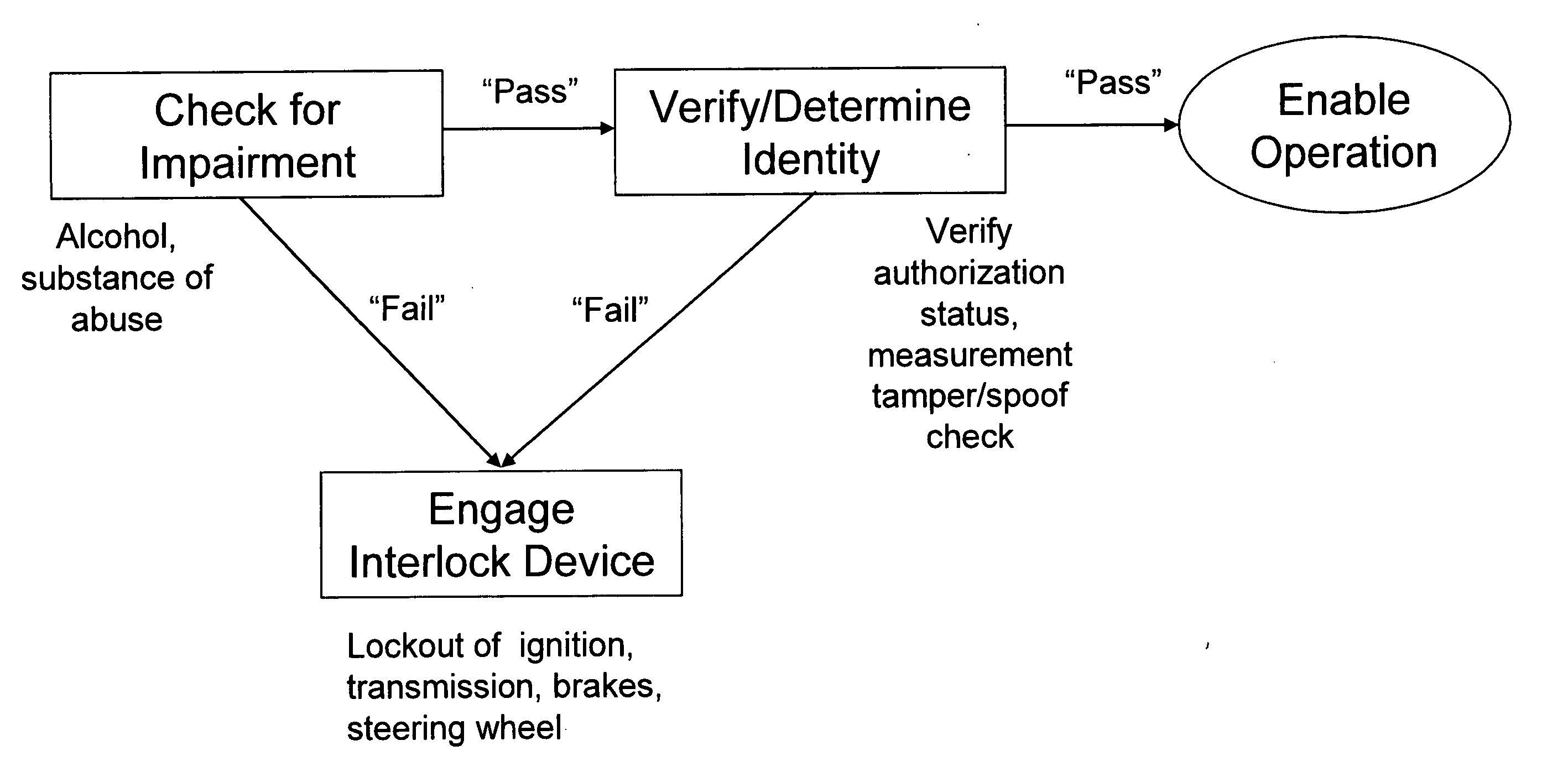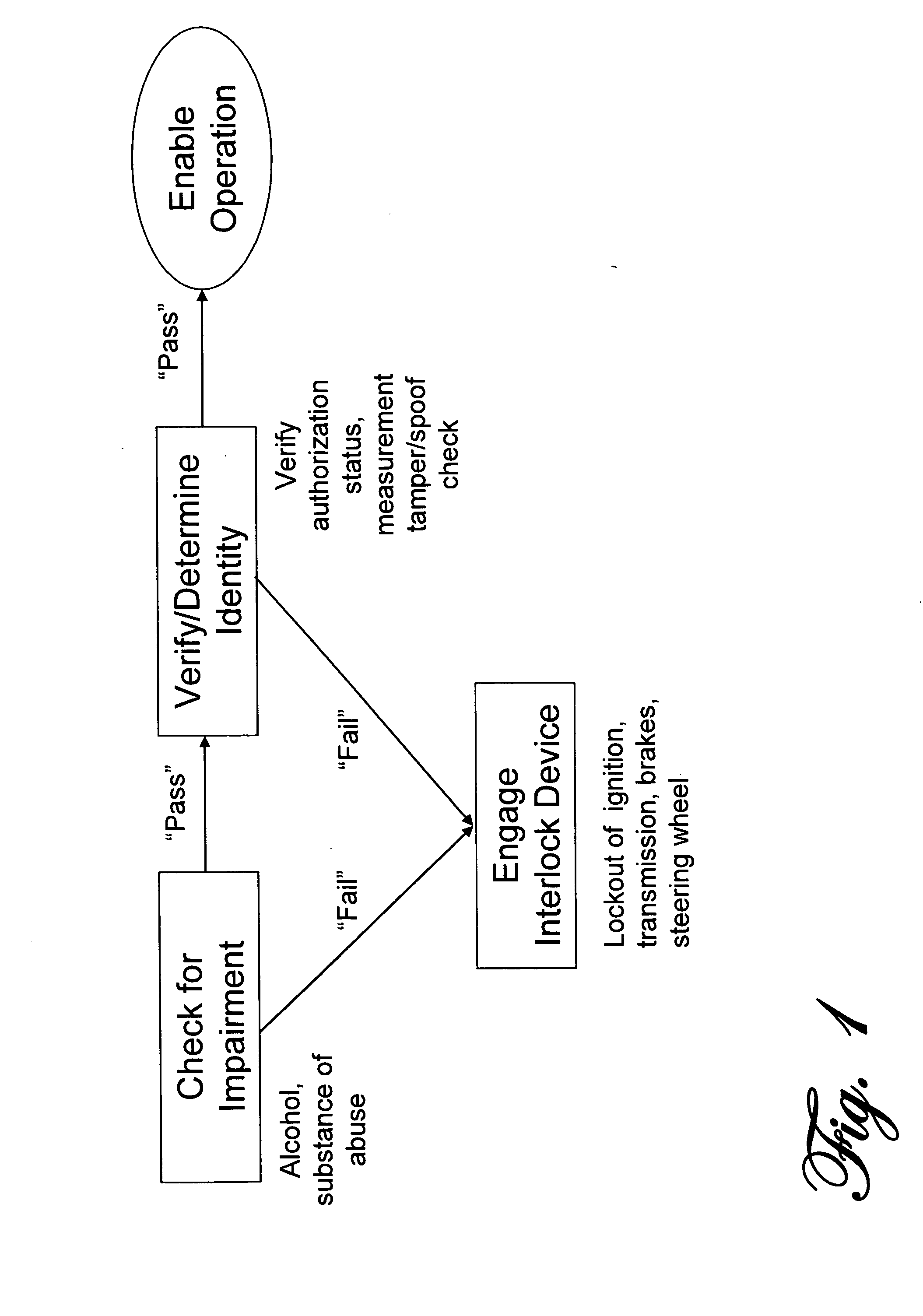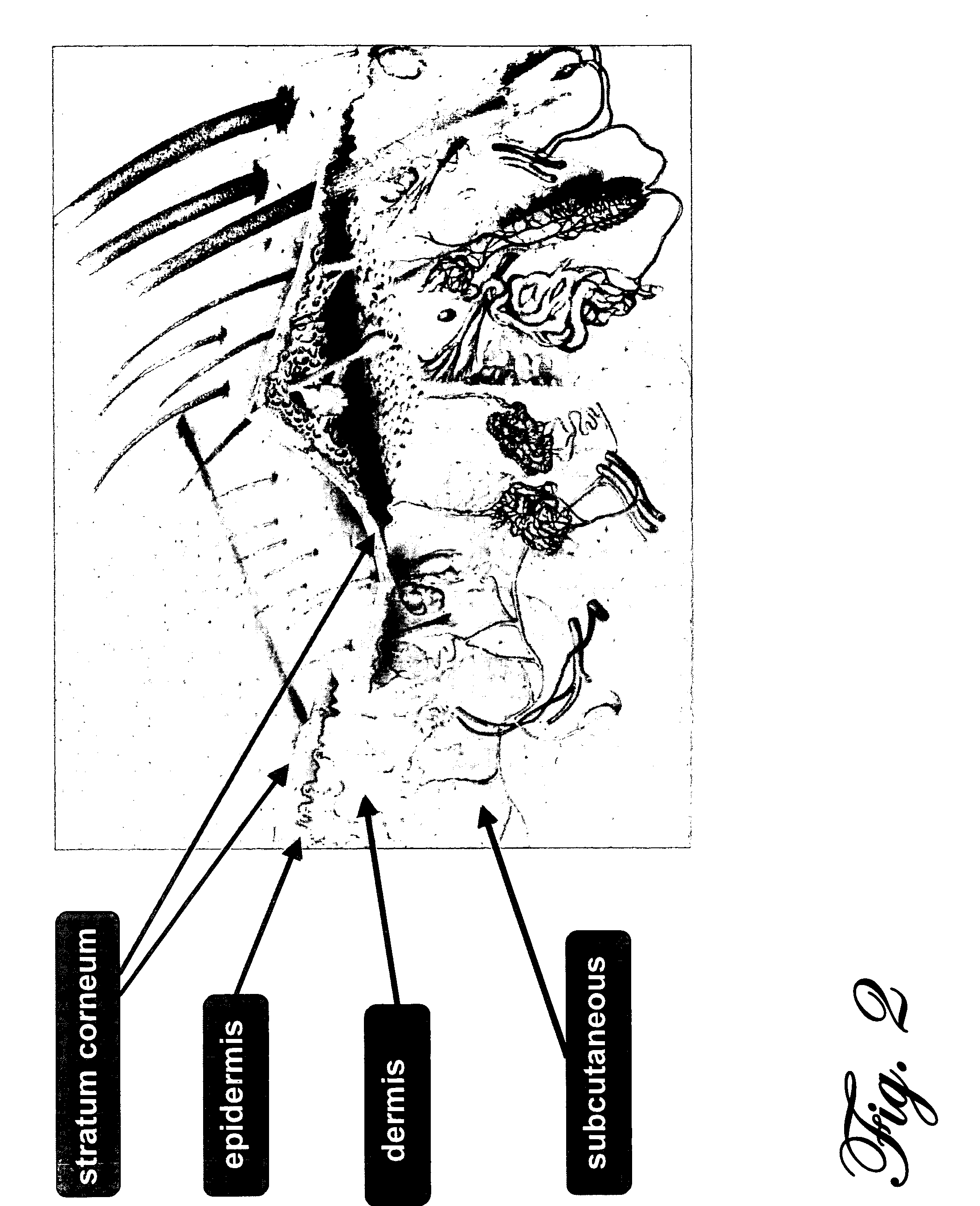Apparatus and method for controlling operation of vehicles or machinery by intoxicated or impaired individuals
a technology for impaired individuals and apparatuses, applied in the direction of optical radiation measurement, diagnostics using spectroscopy, instruments, etc., can solve the problems of difficult reliable analyte measurements, difficult to detect the total absorption of virtually all light introduced to the sample being measured, and difficult to achieve reliable analyte measurements, preventing operation, and advantageous spectral complexity.
- Summary
- Abstract
- Description
- Claims
- Application Information
AI Technical Summary
Benefits of technology
Problems solved by technology
Method used
Image
Examples
Embodiment Construction
[0040] In U.S. patent application Ser. No. 10 / 852,415, entitled “Noninvasive determination of alcohol in tissue,” filed May 24, 2004 and incorporated herein by reference, Ridder et al. disclose a method for the noninvasive measurement of alcohol based on spectroscopic techniques that provides an alternative to the current blood, breath, urine, saliva, and transdermal methods. The device requires passive contact between the noninvasive device and a tissue surface such as a finger, forearm, palm, or earlobe in order to measure the alcohol concentration in the tissue. The alcohol measurement described in Ridder typically requires only a short period of time (i.e. 1 minute or less) and thus is suitable for use in vehicle interlocks.
[0041] In U.S. Pat. No. 6,628,809, titled “Apparatus and method for identification of individuals by near-infrared spectrum”, and in U.S. Pat. No. 6,560,352, titled “Apparatus and method of biometric identification or verification of individuals using optica...
PUM
| Property | Measurement | Unit |
|---|---|---|
| wavelength range | aaaaa | aaaaa |
| wavelengths | aaaaa | aaaaa |
| depth | aaaaa | aaaaa |
Abstract
Description
Claims
Application Information
 Login to View More
Login to View More - R&D
- Intellectual Property
- Life Sciences
- Materials
- Tech Scout
- Unparalleled Data Quality
- Higher Quality Content
- 60% Fewer Hallucinations
Browse by: Latest US Patents, China's latest patents, Technical Efficacy Thesaurus, Application Domain, Technology Topic, Popular Technical Reports.
© 2025 PatSnap. All rights reserved.Legal|Privacy policy|Modern Slavery Act Transparency Statement|Sitemap|About US| Contact US: help@patsnap.com



